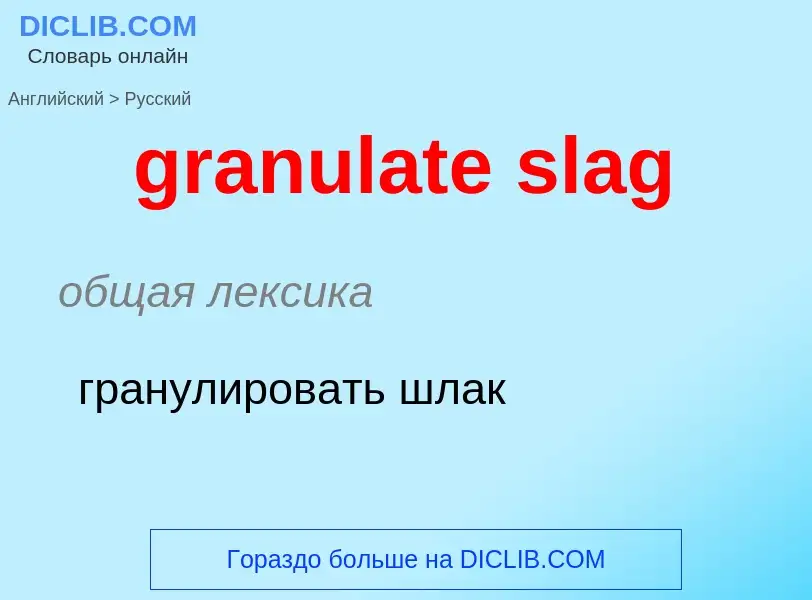Перевод и анализ слов искусственным интеллектом ChatGPT
На этой странице Вы можете получить подробный анализ слова или словосочетания, произведенный с помощью лучшей на сегодняшний день технологии искусственного интеллекта:
- как употребляется слово
- частота употребления
- используется оно чаще в устной или письменной речи
- варианты перевода слова
- примеры употребления (несколько фраз с переводом)
- этимология
granulate slag - перевод на русский
общая лексика
гранулировать шлак
[slæg]
общая лексика
выгар
выгарки
жежелица
окалина
ошлаковывать
шлак
шлаковать
шлакоуборочный
шлакующий
существительное
[slæg]
общая лексика
шлак, выгарки, окалина
металлургия
шлак
выгарки
окалина
геология
пористая или губчатая лава
глагол
общая лексика
(обыкн. slag out) [метал.]
спускать шлак
ошлаковывать
сельское хозяйство
шлаковать (почву)
Определение
Википедия

Slag is a by-product of smelting (pyrometallurgical) ores and used metals. Broadly, it can be classified as ferrous (by-products of processing iron and steel), ferroalloy (by-product of ferroalloy production) or non-ferrous/base metals (by-products of recovering non-ferrous materials like copper, nickel, zinc and phosphorus). Within these general categories, slags can be further categorized by their precursor and processing conditions (e.g., blast furnace (BF) slags, air-cooled blast furnace (ACBF) slag, basic oxygen furnace (BOF) slag, and electric arc furnace (EAF) slag).
Due to the large demand for these materials, slag production has also significantly increased throughout the years despite recycling (most notably in the iron and steelmaking industries) and upcycling efforts. The World Steel Association (WSA) estimates that 600 kg of by-products (about 90 wt% is slags) are generated per tonne of steel produced.


![Pile of steelmaking slag at the [[Cleveland-Cliffs]] Indiana Harbor steelmaking facility. Pile of steelmaking slag at the [[Cleveland-Cliffs]] Indiana Harbor steelmaking facility.](https://commons.wikimedia.org/wiki/Special:FilePath/Indiana-Harbor-scrap.jpg?width=200)

![Clarkdale]], [[Arizona]], showing the striations from the rusting corrugated sheets retaining it. Clarkdale]], [[Arizona]], showing the striations from the rusting corrugated sheets retaining it.](https://commons.wikimedia.org/wiki/Special:FilePath/Slag2.jpg?width=200)
